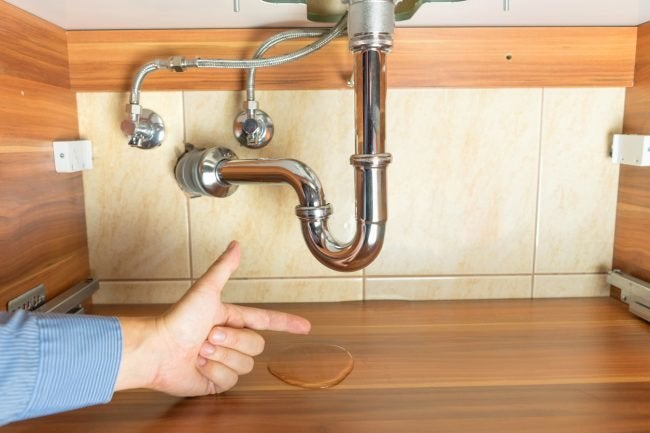6 Ways to Locate Hidden Water Leakages in Your Residence
6 Ways to Locate Hidden Water Leakages in Your Residence
Blog Article
The article author is making a few great pointers relating to Finding hidden leaks as a whole in this content in the next paragraphs.

Early discovery of dripping water lines can mitigate a prospective catastrophe. Some little water leakages might not be visible.
1. Analyze the Water Meter
Every home has a water meter. Examining it is a proven way that helps you discover leaks. For starters, shut off all the water sources. Make sure no person will certainly purge, make use of the tap, shower, run the cleaning machine or dishwasher. From there, go to the meter and watch if it will alter. Considering that nobody is using it, there must be no motions. That indicates a fast-moving leak if it moves. If you identify no adjustments, wait a hr or 2 as well as inspect back again. This implies you may have a slow-moving leakage that might even be underground.
2. Inspect Water Consumption
If you find abrupt modifications, regardless of your usage being the very same, it indicates that you have leaks in your plumbing system. An abrupt spike in your expense shows a fast-moving leak.
At the same time, a stable increase each month, even with the exact same habits, reveals you have a slow leak that's additionally slowly rising. Call a plumber to completely inspect your home, particularly if you really feel a cozy area on your flooring with piping underneath.
3. Do a Food Coloring Examination
When it concerns water intake, 30% comes from bathrooms. Test to see if they are running appropriately. Decrease flecks of food color in the tank and wait 10 minutes. There's a leakage between the container and bowl if the shade in some way infiltrates your bowl throughout that time without flushing.
4. Asses Exterior Lines
Do not fail to remember to check your outdoor water lines also. Must water leak out of the connection, you have a loosened rubber gasket. One small leak can waste loads of water and increase your water expense.
5. Evaluate the situation and also examine
Property owners should make it a behavior to inspect under the sink counters and also inside cupboards for any bad odor or mold and mildew growth. These 2 red flags show a leakage so prompt focus is required. Doing regular assessments, even bi-annually, can conserve you from a major trouble.
Examine for discolorations as well as compromising as the majority of devices and pipes have a life expectancy. If you suspect dripping water lines in your plumbing system, don't wait for it to rise.
Early detection of leaking water lines can minimize a potential catastrophe. Some tiny water leaks might not be noticeable. Examining it is a guaranteed way that helps you find leakages. One small leakage can lose tons of water and spike your water bill.
If you suspect leaking water lines in your plumbing system, don't wait for it to escalate.
WARNING SIGNS OF WATER LEAKAGE BEHIND THE WALL
PERSISTENT MUSTY ODORS
As water slowly drips from a leaky pipe inside the wall, flooring and sheetrock stay damp and develop an odor similar to wet cardboard. It generates a musty smell that can help you find hidden leaks.
MOLD IN UNUSUAL AREAS
Mold usually grows in wet areas like kitchens, baths and laundry rooms. If you spot the stuff on walls or baseboards in other rooms of the house, it’s a good indicator of undetected water leaks.
STAINS THAT GROW
When mold thrives around a leaky pipe, it sometimes takes hold on the inside surface of the affected wall. A growing stain on otherwise clean sheetrock is often your sign of a hidden plumbing problem.
PEELING OR BUBBLING WALLPAPER / PAINT
This clue is easy to miss in rooms that don’t get much use. When you see wallpaper separating along seams or paint bubbling or flaking off the wall, blame sheetrock that stays wet because of an undetected leak.
BUCKLED CEILINGS AND STAINED FLOORS
If ceilings or floors in bathrooms, kitchens or laundry areas develop structural problems, don’t rule out constant damp inside the walls. Wet sheetrock can affect adjacent framing, flooring and ceilings.
https://www.servicemasterbyzaba.com/blog/how-to-detect-water-leakage-in-walls/

As a serious reader on Hacks to detect leaks, I thought sharing that excerpt was a good idea. If you enjoyed reading our page plz be sure to share it. Thank you for your time. Come back soon.
Report this page